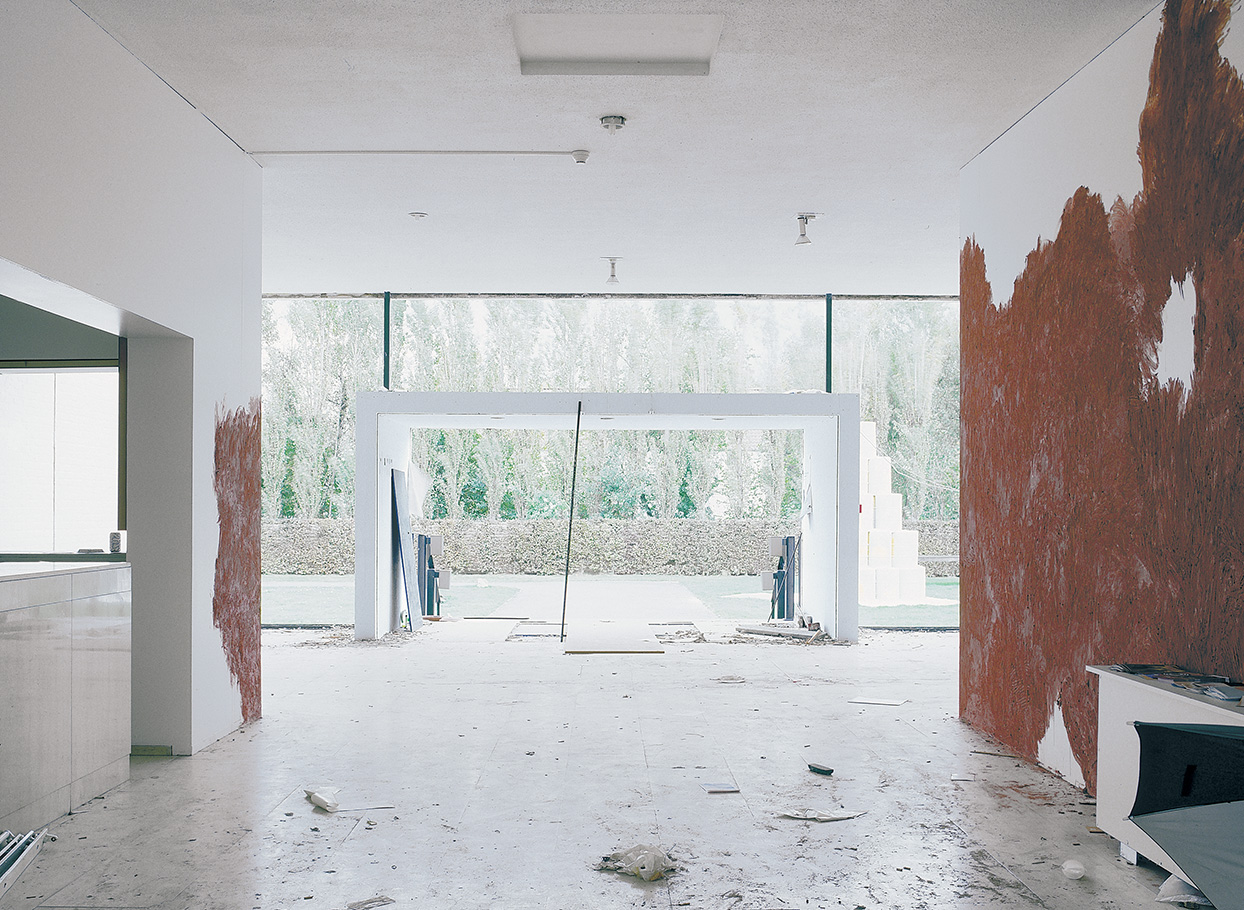The Museum Dismantled and Exposed
April 13, 2005column,

In November 2004 the artist Santiago Sierra staged a much-discussed intervention in the Museum Dhondt Dhaenens in Deurle, Belgium. Entirely in keeping with his reputation as a controversial artist, his gesture was as simple as it was radical. He took all the artworks out of the museum and then removed all the glass from the outer windows and doors. The building was completely dismantled, stripped and reduced to a gaunt structure in which wind, rain and vandals had free rein. There was nothing to see, other than a slowly crumbling skeleton. Sierra has a history of similarly drastic architectural interventions. For his contribution to the Venice Biennale in 2003, he had a brick wall erected in the main entrance of the Spanish pavilion. To the dismay of many visitors, Sierra moved the entrance to the rear of the building, where a Spanish police officer would only allow passage to people holding a valid Spanish passport. Once inside, the handful that met this requirement got to see only an empty and (again) dilapidated space. In Kunsthaus Bregenz Sierra loaded 300 tons of bricks on the top floor. The work, 300 Tonnen, 300 tons, tested the load-bearing capacity of the KUB to its limits. The weight of the top floor had to be distributed via support pillars on the floors below. In each of these three examples, architecture – and in particular the accommodations of institutions – is tested in its capacity to undergo and resist artistic intrusion. Whether the building is dismantled, closed off or put under pressure, the end result is always that the institution is no longer able to function in a normal way, or in the worst-case scenario, to function at all.
Sierra’s interventions are part of a relatively short tradition of symbolic and increasingly violent assaults on architecture, and against institutional architecture in particular, from Daniel Buren’s sealing off the entrance of the Galerie Apollinaire (1968), Robert Barry’s During the Exhibition the Gallery Will Be Closed (1969), Michael Asher’s removal of the windows of the Clocktower New York (1976), Gordon Matta-Clark’s Window Blow-Out (1976) to Chris Burden’s Exposing the Foundations of the Museum (1986). In the 1960s and ’70s architecture was something that had to be reacted against. Architecture was seen as the discipline and practice that represented and empowered the system – the institutions and the social order – and therefore had to be criticized, opposed, demolished, destroyed, rent asunder or blown up. Architecture gives institutions their form – it makes them ‘recognizable’. Therefore it was the ideal target for attacking these institutions and ‘visualizing’ the critique. By intervening in architectural elements like doors, windows, staircases or foundations – those elements that define and demarcate the institutional space – one could assail and challenge the institutional conditioning of that interior.
Such offensives against architecture are no longer opportune today, let alone meaningful. In an era dictated by commercial, media and virtual regimes, there is an explicit need for temporal and spatial enclaves that ‘make a difference’. Art needs its own, demarcated places to prevent it from being washed away, unlamented and unnoticed, in the visual slurry of society. Architecture is simply the perfect medium to give this ‘difference’ a form and a concrete content. It makes it possible to create a framework within which an institution can make concrete and publicly visible moves in the wide and, above all, misty domain of cultural production. ‘Subversive’ works like Sierra’s are nothing more than yet another pathetic and hysterical assault on the wrong institution, typical of the critical zero degree at which a lot of contemporary art operates. It is a blind, nihilistic, and, in a political and social sense, even dangerous attack by art on that very institution that lends it both its rationale and its visibility. In an artistic-institutional landscape plagued by a constant questioning of the ‘means’ as well as the ‘place’ of art institutions, it is an act of unbelievable stupidity to play the anti-institutional card once again, and to do so by tackling the very instance that mediates in the creation and demarcation of this institutional place. Sierra’s dismantling of the museum building, then, is nothing more than a vulgar stunt that made the Museum Dhondt Dhaenens briefly ‘visible’ in the media. But above all it is representative of the cynical complacency with which curators, in their servile flirtation with artists, are willing to put their own institutions on the line. Moreover, their common hidden agenda is all too obvious: a hankering for a reputation as a critical and controversial rebel. It goes without saying that we must continue to question the place(s) in which art appears in public, and the role of architecture in this. But preserve us from frivolous and idiotic interventions like Sierra’s.
Wouter Davidts is a postdoctoral researcher at the Department of Architecture and Urban Planning of Ghent University. He is the author of Bouwen voor de kunst? Museumarchitectuur van Centre Pompidou tot Tate Modern (2006) and in 2007 he curated the show Beginners & Begetters at Extra City, Center for Contemporary Art, Antwerp.